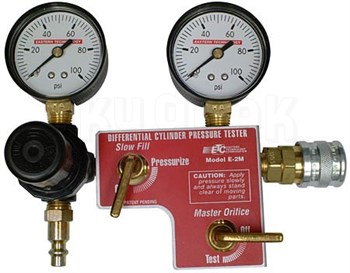Cessna T210L Annual: Part II
Compressions
Some mechanics like to do compression tests with a hot engine—that’s what the tester manufacturer recommends. My current IA does them cold. It can be done with one person, but I usually hold the gages write down the numbers. This time it took around 45 minutes. All of the compressions are OK but we have a major exhaust valve leak on one cylinder, a minor leak on another, and a bit of leaking on the rings on one cylinder.
The exhaust valve leak is not something that we can ignore. The way you find it is to listen to the air escaping from the cylinder through the exhaust. On the one cylinder, it was very obvious. On the other, you had to get close to the exhaust to hear it.
If you have an intake leak, you can listen to the intake manifold. Since we took off the intake from the turbo to get to the oil filter, it was easy to hear the hissing.
Next step is to look at the valve with a borescope.
By listening for escaping air at key engine locations, you can generally determine the source of low pressure readings:
- Air Escaping from Carburetor Intake: Indicates Leaking Intake Valve
- Air Escaping from Exhaust System: Indicates Leaking Exhaust Valve
- Air Escaping from Crankcase Breather: Indicates Defective Rings
In our case, the valves weren’t pitted, warped, or cracked. Since the compressions were fine, we need to watch those cylinder temperatures, but don’t have to replace them.
Hydrostatic Testing
Our oxygen cylinders are DOT 3AA steel cylinders. They need to be pressure tested every five years and have an unlimited life. Newer cylinders—DOT 3HT—are high-tensile steel. They are lighter but must be inspected every three years. They have a service life of 24 years. Even lighter are composite cylinders. They are made of aluminum inside with a Kevlar wrapper. They need to be tested every three years and last for 15 years. When you fill your tanks, it is important to use aviation oxygen. It contains very little moisture to condense and freeze at low temperatures.
You can read more about aviation oxygen systems at Aviation Pros and read the regulation governing their periodic qualification at 49 CFR part 180



